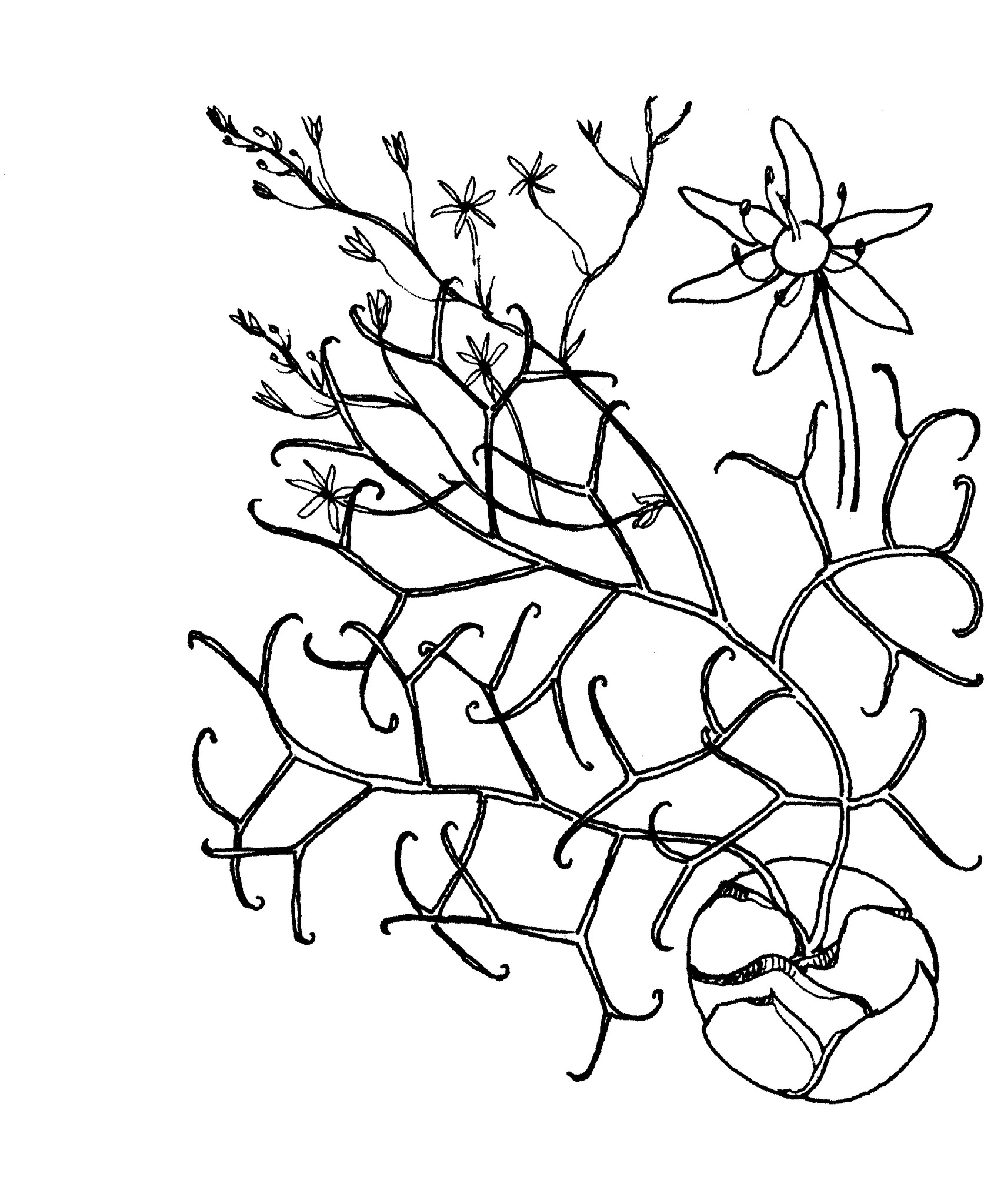
Named for James Bowie (1789–1869), an English plant collector sent by the Royal Botanic Gardens Kew to collect in the Cape.
Perennial herbs, bulbs globose, becoming green when exposed, scales fleshy. Leaves reduced to scales. Inflorescence axis annual, succulent, photosynthetic, scrambling, much branched, up to 5 m long with flowers borne in the upper branchlets. Flowers (or plants) unisexual, nodding, greenwhite, individual flower stalks articulated; perianth segments ascending, shortly united into a tube, tips widely spreading. Stamens 6, free. Ovary superior, trilocular. Fruit capsule containing a few flattened black seeds.
This strange plant is sometimes grown commercially for medical chemicals in the bulb, but is more commonly encountered in collections of succulents. In Australia the plants grow during the summer and are dormant during the colder months.Grown in good light, often under glass or with cacti and succulents.
2 species from S and E Africa.
Seeds, or bulb scale cuttings.
Large, exposed, green, scaly bulb and green, climbing, leafless inflorescence.
Bruyns & Vosa (1987), van Jaarsveld (1992).
Source: (2005). Bowiea. In: . Horticultural Flora of South-eastern Australia. Volume 5. Flowering plants. Monocotyledons. The identification of garden and cultivated plants. University of New South Wales Press.
